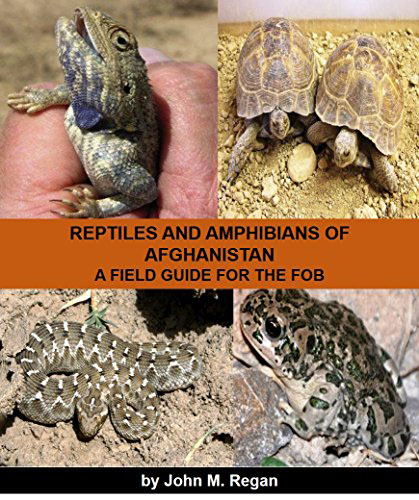
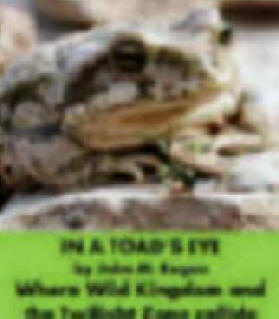
< >
Afghan Arabia Wild
AFGHANISTAN REPTILES
I have collected a sufficient number of photos to give my Afghan reptile friends their own web page. Lizards are plentiful here, but it is location dependent. In the northern, higher altitudes finding different species was not terribly difficult once the weather warmed into spring. By the time I arrived in the desert locations around Kandahar, however, temperatures were regularly hitting 120 to 130 degrees Fahrenheit and higher on a regular basis. Unlike yours truly the herps around here know enough to go to ground when the thermometer goes to those extremes. Nights, evenings, and early mornings are the best time to find these fellows. Those are not the best times to be prowling around a military compound with a camera, however. But I've worked around the problem and have scored some satisfying photos.
AFGHAN LIZARDS
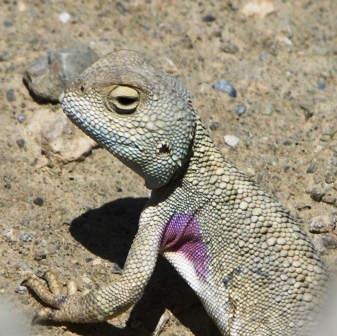

The Agama Family of lizards are the most widespread. The come in a variety of color patterns from the rather drab fellow on the top left to the metallic blue flash of the handsome fellow at the other end of the scale. Unlike most of other desert lizards agamas are not prodigious burrowers and prefer to spend even the hottest part of the day outside or hiding under minimal cover. They are also wonderfully cooperative reptilian photography models due their heavy reliance on camouflage. The general size of these lizards is displayed by the handsome specimen I'm holding in the photo, although I have seen a specimen that was nearly a foot in length. The little guy hidden by vegetation was only a couple of inches long.
< >
The most widespread after the Agama Lizard Family is a group of more stream lined lizards that in the states are known as alligator lizards or skinks. I am not sure of the exact species pictured here but like the Agamas I have found these guys from 9,000 feet above sea level to the desert floor. The photo in the middle is my favorite. I walked right up to this little guy and he stood there and let me film as though he was auditioning for a Gieco commercial.
This next lizard is a very handsome, stout bodied fellow that normally exceeds eight inches or so in length. Eremis velox persica are prodigious burrowers and their handiwork is found in sandy soil in numerous places. Although they may have originally taken up residence in abandoned rodent holes, they do their best at home improvement. They are fastidious about their burrows; very morning I see evidence of their ongoing excavations.When the temperature and time (mid-eighties, early morning) are right I have run into dozens of these lizards foraging for insects in the morning. These are beautiful, very active, territorial reptiles.
The "Tail Lasher" in the left and middle photos is a colorful and active little lizard that comes in at about three to four inches long. Common here, but not sighted anywhere nearly as much as I've seen them in Saudi. These are amusing fellows to watch. They skitter along for a few feet, stop, and lash that long tail back and forth while raising first one front leg and then the other.
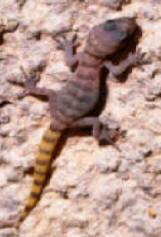
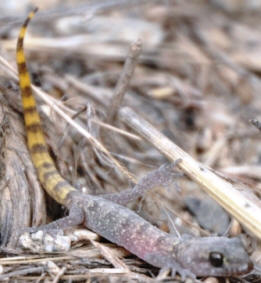
Of course we have our little Geckos over here, too. This brownish fellow measures about four inches at maximum and haunts the sand bags and Hesco barriers in warm weather. These particular ones I photographed in Lash ka Gar, Helmand province. Strictly a creature of the night, especially late evening, they are not averse to hunting for prey on the ground either. They are not what you'd call pretty, but they display the typical luminous gecko eyes that the species are famous for. I have not heard any kind of vocalizations from them. The tiniest and most beautifully colored gecko I have seen so far is the little striped tailed specimen on the right. Barely an inch long they sport that distinctively striped tail, these cute little lizards could curl up in a thimble. The lizards above were found near the Darulaman "Castle."
< >
AFGHAN SNAKES
Above and below are photos of a Saw Scaled Viper, Echis carinatus. A pretty, venemous (note the fangs) little snake that only grows to about a foot to a foot and a half in length. This, however, is exactly what makes them so dangerous. Attracted to mice and other small rodents, they are fond of human habitations where their prey prefers to live. Such was the fate of the little serpent in the photos above. This guy crawled into someone's office over here and was dispatched with a shovel before I could save him. The picture on the right clearly shows the snakes specialized scales. When threatened they vigorously rub these side scale together and create a soft buzz that sounds very much like someone hissing "SSHHHH" at you. The photos below are what these snakes look like when alive.
These specimens were discovered "outside the wire" As you can see they are a stout bodied reptile, but the appearance is deceptive. This one, a female I think judging from the short tail length was probably not more than one foot long. Like most venemous snakes, though, they are feisty, a factor you have to consider when you are operating a camera. The shadow you see over the snake on the picture on the right is from my arm holding up the board I found this specimen under. I filmed with the other hand, but all the while the snake was striking and advancing. Keeps you alert! These snakes have beautiful golden amber eyes, especially evident in the photo on the right. Similar in size and temperament and just as common in these parts is Russell's Viper, one of the most dangerous in the world due to the number of bites it inflicts.
One of the non-venemous species. I found this little brown snake wandering around in the early morning outside of Kandahar Air Base. Identified in the Reptile Database as Platyceps rhodorachis, I doubt if the little fellow surpassed ten inches in length. He appears much longer due to his very slender body. I got a lucky break by finding it in the open. In the open terrain I was able to maneuver the reptile into a position for a decent photograph. These little reptiles are another species that seems to enjoy human company, well, at least our homes. The photo on the far right is, I believe, and adult P. rhodorachis, this one a couple of feet long found inside Camp Julien, in Darulamen. They range throughout the country. One actually fell on my head when I opened the door to my hootch in Kandahar. I have come across a couple of other harmless species, but they are incredibly fast and have always managed to elude my shutter by dashing into a nearby burrow. Venemous species are much easier to photograph because they will stand their ground and fight! Of course, there is the danger of paying a high price for the picture, but hey, you can't have everything, right?
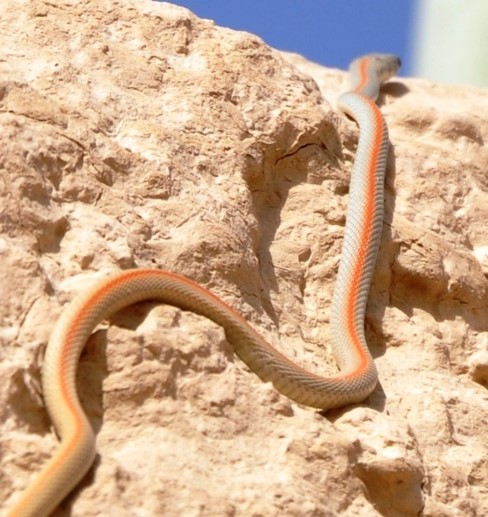

Contrasting in size and color are these beautiful specimens from the more northern regions of the country. The left and middle photos are what I call an Orange Striped Racer, it actually a Braid Snake. This small slender serpent was filmed while scaling the vertical mud wall of an Afghan building outside of Mazar-e-Shariff in northern provinces. Without doubt it is the prettiest snake I've seen over here. Unfortunately the little guy went up and over the wall before I could get a better shot. On the other end of the size scale is this six foot Steppe rat snake found in the central region of the country near Kabul. These big fellows must be common in the area based on the number of shed skins I have found here. I liken them to US Gopher and Bull snakes. Big and fast, they live in burrows. I have a skin hanging in my room roughly six feet long - and at least a foot or so is missing - the piece containing the head. Cold weather set in shortly after this was taken and the snakes around here have gone to ground. Note the threat posture of the neck.
AFGHAN TORTOISE
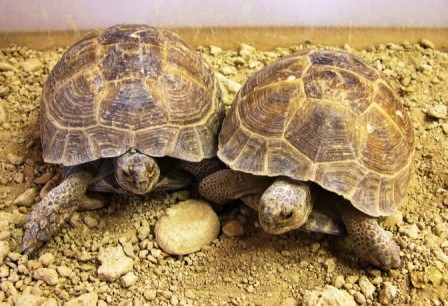
Last and certainly not least is everybody's favorite reptile - the tortoise. The pair pictured above were captive specimens lovingly cared for by soldiers and airmen in a forward operating base outside of Helmand. Despite the name these testudines should look familiar; they are commonly sold in pet shops as Russian Tortoises. Considering where these two were found they are most definitely Afghans. Hardy and tough reptiles, they are common in many places in Afghanistan and up into Russia.
< >